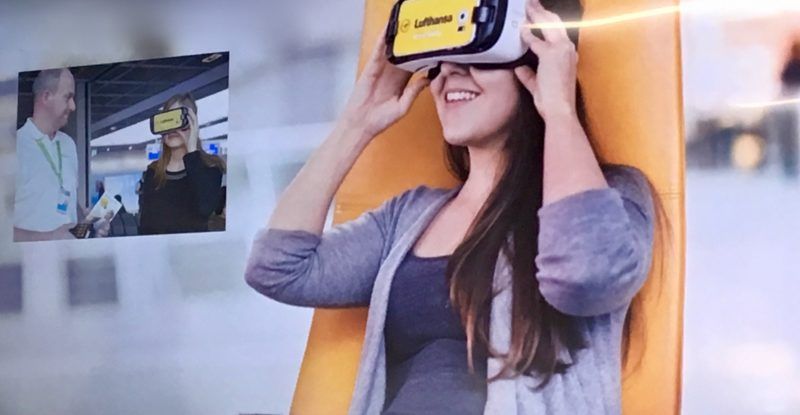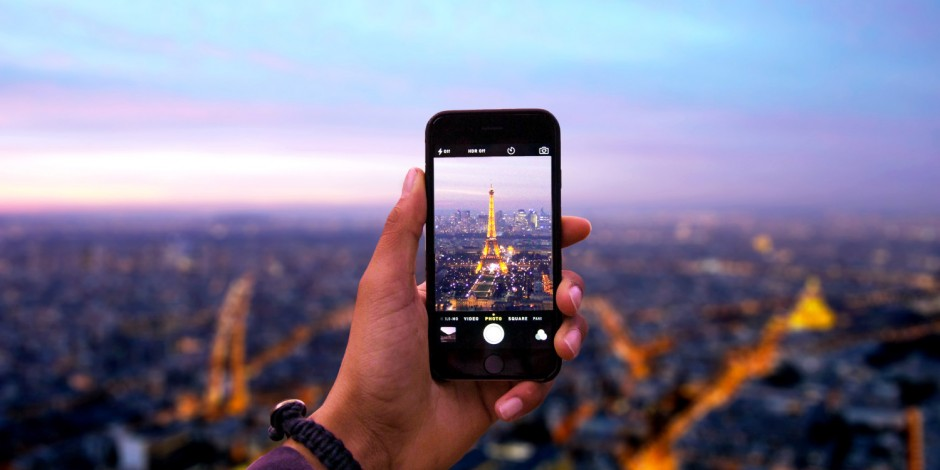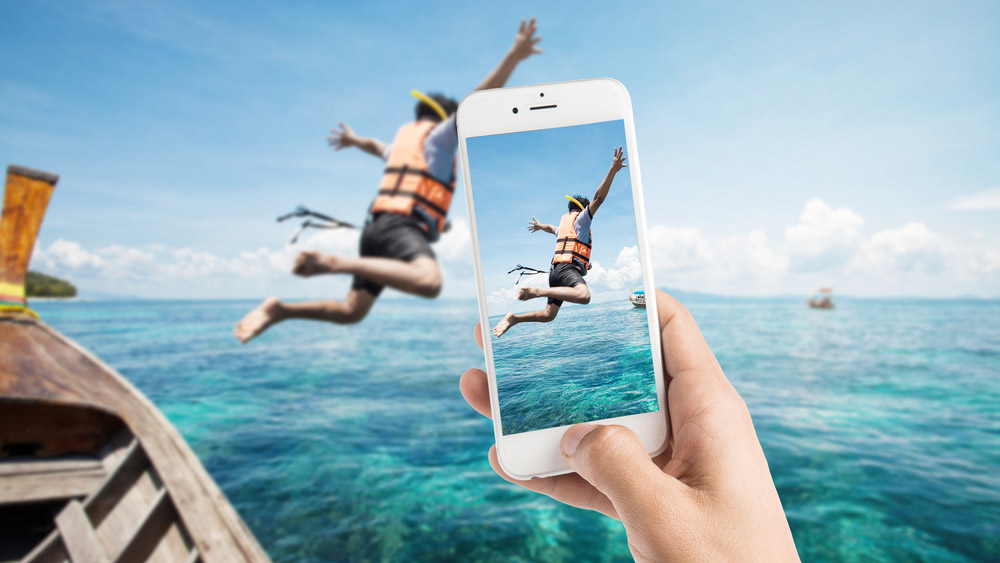VR and AR in Airports: Beyond Entertainment
Angela Hassassian
Mar 30, 2019 - 7 min read

In part one of Virtual Reality in Airports, we mainly discussed how VR is being used to entertain travelers while they wait for their flights. But the uses of VR technology in airports doesn’t end there. In this article we want to delve deeper into the other, lesser known uses of virtual reality technology by airlines, in airports and other travel industry professionals.
VR For Commerce
The period when a passenger is waiting to board a plane is actually a very key time for industry professionals. This period is called “dwell time,” and airports seek to capitalize on it as much as possible since dwell time is prime time for commerce. When it comes to VR, renting out entertainment for 10 minutes increments is not where it ends. Here are a few other commerce-related examples to consider.
Lufthansa
Lufthansa tried to take a more creative approach when it came to selling upgrades to Premium Economy passengers at the departure gate. They invited passengers who are waiting at the gate to put on VR glasses and explore the Premium Economy seat, and the way the cabin looks in a completely 360-degree view. The idea was to get customers to ask for an upgrade, a request which would then be easily accommodated at the gate by paying a simple surcharge. According to reports by Lufthansa, this approach has gained some success in the US!
Royal Dutch Airlines (KLM)
KLM added an interesting twist to this approach. They turned to VR to carry out a very interesting PR/Marketing campaign. KLM is known to be a luxury airline with flight costing upwards of a thousand dollars. Certainly, they aren’t everyone’s cup of tea when it comes to their wallets, but there’s no question that the experience they offer is competitive. That is what inspired their campaign. By distributing VR cardboard headsets to passengers of competitive airlines, KLM offered a chance to explore their VR app. The app featured all the amenities available on a KLM flight, essentially feeling like a virtual upgrade, hence the name of the app, Flight Upgrader. Passengers are then able to watch a movie on KLM’s entertainment system and use the free KLM media app to read a newspaper.
Emirates Airlines
Emirates Airlines have been trying to find more than one use for VR technology. They decided to incorporate VR at one of the biggest regional conferences for the travel industry, the Arabian Travel Market. Here, the same logic was used as at Lufthansa, in that they wanted to take the participants of the travel show on an immersive journey, where they would experience top-class business or leisure travel from the couch. This gave participants a chance to review the overall comfort or specifications of a certain seat before buying a ticket. The hope was to inspire and encourage customers to book with their airline thanks to the unique experience or services that it provides.
VR and AR for Accessibility
One of the most stressful parts of flying can be getting lost in the expansive space of an airport. Finding your way around can really be a nightmare. Turns out that airports are looking to advanced technology to help ease the burden and stress. Here are a few ways how.
Firstly, VR technology is starting to be used well before the airport is even open, during the phases of planning, construction and operations. There are so many complexities in an airport contributing to both their functionality and user experience. “Airports are also work environments for office personnel, security staff, air traffic controllers, shop assistants ect. Hence airport planning has to provide functional solutions for gates, airfields, control towers and service functions.” That’s where VR technology comes in. There are now VR apps which help in the process of analyzing, planning and validating overall infrastructure for arrivals, runways and internal flows, as the airport is being built!
Next up are virtual tours, which are no strangers to VR. This function can be used in a number of different spheres, but it turns out that recently, there are useful VR applications which can be used from the comfort of your own home before it’s time to visit the airport. As a traveler-to-be, you can take advantage of virtual tours and learn about the location, and visualize your route in the airport so you don’t get lost on the day of. Less lost flyers can equal fewer delays and take the weight off customer service personnel, so everyone wins!
Moving away from VR, Augmented Reality technology is starting to make its mark in the travel industry with a boom. Finding your bearings in an airport is just one of the newest services that it is offering. There are already a few examples of how AR is being used to provide reliable navigation and help improve customer experience, allowing them to find their way to departure gates, restaurants, lounges or shops.
This is the case for the UK’s second busiest airport, Gatwick, which uses Bluetooth beacon technology in combination with an AR wayfinding tool, letting smartphone users easily locate where they are. There are plans to develop the app further in order to allow for push notifications warning passengers if they are running late, or for retailers and other third parties to use the system to detect the proximity of a user and push marketing messages and offers to those who have opted to receive them.
Soon we will likely see VR headsets being used in a similar fashion, allowing third party members to advertise restaurants, museums, tour services etc., by giving travelers a sample of what they can expect or buy in their travel destinations. This is probably the track that interests us at 360 Story the most, as an airport seems to be a very opportune spot for reaching out to potential customers traveling around the world.
Technology Helping Customer/Brand Interactions
In the past, we’ve discussed how this technology can be used to shake up marketing in the travel sector. Potential travelers can use VR technology to plan and choose their holidays as well as to interact with tourism brands. We can look forward to a time when interactive experiences are considered normal and even expected. It’s not hard to imagine such a time, as customers are already expecting new, innovative and creative experiences to be offered by all different kinds of companies as it is. In terms of airports, there is great potential for the commercial benefit of VR.
Trials have already been conducted by various airlines, where they use VR entertainment technology at their First Class Lounges to get feedback from their customers to then use for the future of their airline in terms of entertainment. These companies are constantly trying to find new ways to connect to their customer base and enhance their service and hospitality, using technology to do so. Modern travelers have certain expectations, and there is a gap in the market. There is a constant desire for more information, connectivity, engaging, entertaining and immersive experiences. That is why many airlines are looking to boost their premium lounge experiences to go beyond simply comfortable design, luxurious amenities and fine dining, adding more personalization and technology-based entertainment solutions as well!


